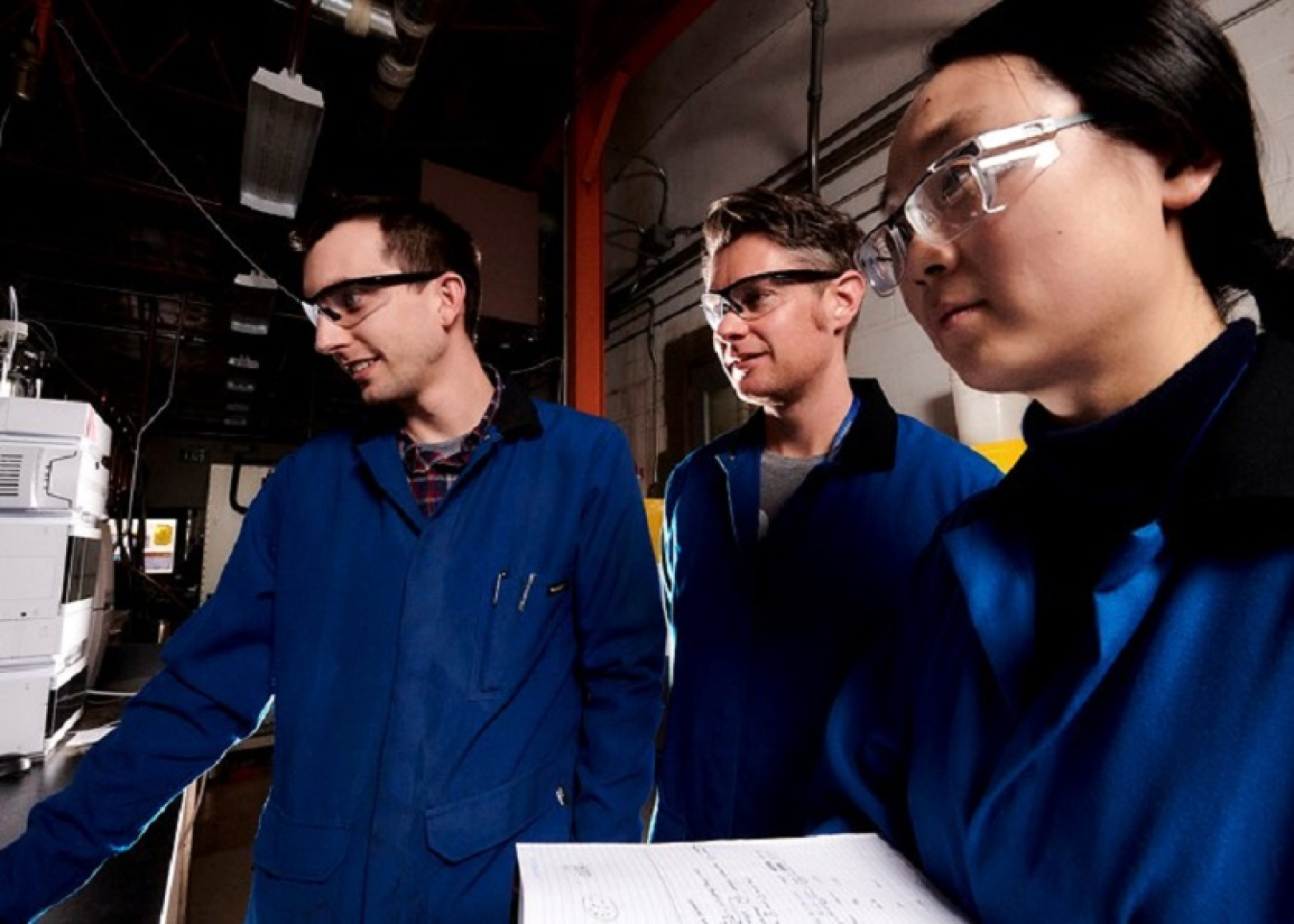Bioprose Blog: Researchers at LANL develop a renewable jet fuel additive
November 18, 2020
Author: Sheila Van Cuyk, Laboratory Relationship Manager for BETO Programs at Los Los Alamos National Laboratory
Read Sheila's bio ►
Meet the other bloggers ►
Return to Bioprose blog ►
Bioprose Blog
Taking Off into Cleaner Skies with LANL Research
Although many travelers are just beginning to return to airports following the pandemic-induced drop in air travel, scientists have maintained focus on improvements that can be made in aviation. One such project at Los Alamos National Laboratory (LANL) is targeting sustainable aviation fuels that can reduce harmful emissions, including greenhouse gases.
Not all Transportation Fuels are Created Equal
Relative to gasoline and diesel, jet fuel is governed by more stringent specifications and requirements to be approved for use in aircraft. Examples include jet fuel’s freezing point, flash point, and energy content while maintaining lubricity and compatibility with aircraft and fuel delivery infrastructure.
These fuel quality specifications ensure aircraft operability and flight safety. Researchers must keep these high standards in mind when producing new sustainable alternatives to traditional fossil fuel-based jet fuel.
LANL Develops Bio-Based Chemicals for Better Jet Fuels
Scientists at LANL are working on producing bio-derived chemicals to help renewable jet fuel meet or exceed current specifications while also offering a performance advantage. The challenge, however, in making biomass-derived transportation fuels suitable for jet engines is that they lack energy-density; in other words, the hydrocarbon chains have too much oxygen in the mix to meet ASTM International fuel quality specifications.
Funded by the Bioenergy Technologies Office through the Chemical Catalysis for Bioenergy Consortium, chemists Andrew Sutton (now at Oak Ridge National Laboratory), Cameron Moore, and their team at LANL have found a solution for increasing the energy content of fuel derived from bio-based feedstocks.

Starting with acetone molecules derived from plants, LANL scientists use light to convert this simple molecule into complex molecules that resemble jet fuel. Photo (taken prior to social distancing requirements) courtesy of LANL.
Ultraviolet Light for Energy-Dense Jet Biofuels
As published in Sustainable Energy and Fuels, Sutton’s team members started with acetone, which can be produced efficiently from biomass via numerous biochemical routes. Three acetone molecules are bound together to make isophorone, which is a cyclic molecule.
Starting with two individual isophorone molecules, the scientists then used ultraviolet (UV) light to produce a more complex molecule that contains a strained cyclobutane. This process essentially traps the UV energy in the molecule, resulting in an overall energy increase. Finally, Sutton and his colleagues used chemical catalysts to remove the oxygen atoms to make polycyclic alkane molecules, which are suitable for jet fuel.
The LANL-developed bio-based polycyclic alkane molecules resulted in a sustainable fuel with a 12% higher energy content than Jet-A, which fuels modern commercial airliners. A renewable fuel that has more energy could make it possible for a plane to carry more cargo or fly further with the same amount of fuel.
The Sky’s the Limit with LANL’s UV and Acetone Research
Using biomass, the polycyclic alkane mixture could be produced domestically and blended with conventional jet fuel to be “dropped in” to existing aviation infrastructure. This means that new types of planes and fuel equipment are not needed. In addition, renewable aviation fuel provides environmental benefits such as a reduction in CO2 emissions.
Dr. Sheila Van Cuyk

Dr. Sheila Van Cuyk is the Laboratory Relationship Manager for Bioenergy Technology Office programs at Los Alamos National Laboratory (LANL). She is a scientist in the Bioscience Division, LANL’s Biofuels Program Manager in the Applied Energy Program Office, and a National Security and Defense Program Manager for Global Security.
Sheila has a background in molecular biology and environmental engineering and has over 15 years of experience developing innovative interdisciplinary solutions to complex problems. Prior to her current role, she fulfilled an Intergovernmental Personnel Act billet as a Program Manager at the Department of Homeland Security, Science and Technology Directorate working in the areas of biological threat detection and biosurveillance.
Sheila completed her M.S. and Ph.D. in environmental engineering from the Colorado School of Mines and her B.S. in biology from the College of William and Mary.

